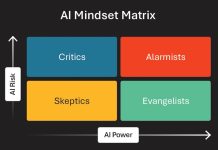Finding the sweet spot is an objective in many aspects of business spending. In designing incentive programs, not allocating enough budget can result in lack of enthusiasm among participants that causes a company to fall short of a program’s objectives. Conversely, overspending on rewards can erode ROI to such a degree that it becomes difficult to justify the proper budget for any subsequent campaigns.
The Incentive Research Foundation (IRF) recently published results of a study it completed to help incentive program sponsors maximize spend while avoiding reward expense that yields diminishing returns in engagement and performance.
The report, entitled “Non-Cash Value Perception: Identifying the Tipping Point,” sought to identify optimal reward values across a number of industries and in several workplace scenarios. Researchers used the Van Westendorp survey method — a technique commonly used to determine consumer pricing perceptions — to gain a deeper understanding of program participants’ views on budgets and funding, measuring program performance, program participation and the impact of reward value on morale and retention.
Respondents were asked five questions for each scenario to determine a “tipping point” at which the dollar value of the reward would most effectively drive a desired outcome:
- What dollar value reward would you expect to receive if you accomplished this?
- At what dollar value would you consider it not worth the effort to earn the reward?
- At what dollar value would you start to consider making the effort to earn the reward?
- At what dollar value would you definitely make the effort to earn the reward?
- At what dollar value would you make extra effort to earn the reward as quickly as possible?
Stephanie Harris, president of the IRF, said the research was born from strategy sessions with the IRF board and contracted researchers. “People have been looking for how to identify the right amount to spend on rewards without spending too much. We hear regularly from end users looking for data on this,” she said.
Because responses vary according to individual preferences, Harris and others involved in the research advise incentive program sponsors to poll their own participants using the same five questions to get an accurate sense of the sweet spot for their participant group.
Value Matters
The IRF surveyed 500 full-time employees or channel partners eligible for non-cash rewards programs within their organiza- tions. The survey included a mix of age, gender, company size and geographical location. Workers in these four vertical industries were surveyed, in part to reach a wide range of income levels:
- Retail sales associates earning $15 to $25 per hour
- Insurance agents earning $60,000 to $120,000
- Financial advisors or consultants earning $75,000 to $150,000
-
Operations, IT and administrative professionals earning $50,000 to $150,000
In assessing what drives participant engagement in an incentive program, the reward value clearly wins out over other factors. A full 52% said the value of the reward is key in making the program appealing — 32% higher than the next highest factor). Three additional factors follow: relevance/personalized to the participant (20%); Clear and achievable objectives (17%); and variety in reward offerings (17%). Trailing that are (the always vague) “other” (11%); peer recognition (10%); and timeliness of reward achievement (7%).
When asked what factors have led to them choosing not to participate in a reward program, reward value topped all answers again (56%). The effort required to obtain the reward and the alignment of a reward to an individual’s interests each garnered 22% of respondents as a factor in declining to participate.
Reward Value Optimization
In pursuit of the value sweet spot, respondents were asked to provide the monetary value of past reward offerings and their satisfaction with those rewards. It may be heartening for program sponsors with limited budgets to know that while reward value is a key driver of participation, the level of satisfaction held steady across a wide range of value ($214 to
$390). Programs involving sales goals required a substantially higher reward value — $696 — to satisfy participants.
“Participation is high when we use well-designed non-cash rewards, even if the monetary value of those rewards is lower than a cash reward may have been,” one respondent stated.
Not surprisingly, respondents in the higher-salaried positions reported expecting a higher value of reward to drive their engagement than workers in jobs that paid less. If you have more personal purchasing power, it requires more to make you want to put in extra effort to earn a reward.
Using the Van Westendorp survey method allows companies to adjust reward spend based on their primary objective. For example, in a program designed to inspire employees to create innovative solutions to an efficiency problem:
- 62% of respondents indicated they would consider making the effort to earn the reward.
- 32% would definitely make the effort to work toward the goal.
- 18% would exert extra effort to achieve the reward.
If the goal of the program is to maximize participation, the reward value could be established from the “definitely make the effort” curve. Under this consideration, steady increases in engagement can be achieved with reward values up to $325, at which point 70% of respondents would definitely partake in the program. Beyond this mark, the proportion of respondents who can confirm their engagement begins to plateau until reaching a reward value of $500 (83%).
Conversely, if the objective is to generate excitement among participants regarding the program and its rewards, the “make extra effort” curve should guide the incentive reward value. In this case, an optimal reward value might be around $300, as 54% of Business Operations personnel would invest extra effort to achieve the goal. Minimal changes in response are observed until reaching $500, where the participation rate increases to 57%, demonstrating that even higher reward values can drive greater engagement if the rewards budget allows.
Learn What Drives Your Participants
The report states, “to maximize the effectiveness of incentive reward programs, organizations must recognize that a one-size- fits-all approach is insufficient due to the inherent variability in participants’ expectations and motivators. The findings from this study highlight the importance of understanding the specific needs and preferences of potential program participants.
“Strategic alignment between reward value and participant expectations serves to not only drive higher participation but also to enhance overall satisfaction with the incentive program. Ultimately, a customized reward program will lead to improved performance and a stronger commitment to your organization’s objectives.”
In an IRF webinar discussion of the survey results, Megg Withinton, vice president of analytics at Insperity, a provider of HR and performance solutions, said an important use of this type of data could be identifying what value of reward it takes to maximize engagement and motivate middle performers.
“Top performers are going to perform no matter what,” Withinton said. She suggested in some scenarios, it could be appropriate for companies to narrow the size of the audience they survey to inform the discussions they want to have internally about where the tipping points are and to identify the outcomes they want to drive.





